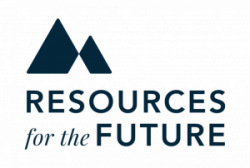Visualizing Federal Funding for Wildfire Management and Response
Over the past two years, the federal government has invested unprecedented amounts of funding in wildfire suppression, hazardous fuels reduction, community preparedness, and restoration through the Infrastructure Investment and Jobs Act (IIJA) and the Inflation Reduction Act (IRA). Together, the IIJA and IRA provide $24 billion in funding for wildfire issues, distributed over 40 different programs and administered by a dozen agencies.
Alongside these investments, three interagency bodies—the Congressionally mandated Wildland Fire Mitigation and Management Commission, the Wildland Fire Leadership Council (WFLC), and the White House Wildfire Resilience Interagency Working Group—are currently working to update and implement the National Cohesive Wildland Fire Management Strategy and to chart a new policy course for wildfire resilience and management to meet this moment of severe risk from catastrophic megafires. The confluence of these developments has created a prime window for change in wildfire policy and action.
To assist policymakers, funders, and interested stakeholders in their decision making, the Federation of American Scientists (FAS) and Resources for the Future (RFF) have developed a data visualization tool to break down the current landscape of federal funding.

About the Federal Wildfire Funding Wheel
The Federal Wildfire Funding Wheel analyzes federal funding across three core domain areas: Restoring Landscapes, Fire-Adapted Communities, Wildfire Response. Its structure is modeled off of a similar diagram that was developed by the White House Interagency Working Group to inform coordination opportunities across agencies. We have reformulated it to provide a more dynamic visual presentation that can be easily enriched with additional data layers and funding information as they become available.
The Wheel maps coarse allocations of federal dollars identified in the IIJA and the IRA and does not include funding that would appear in the annual appropriations. The Congressional Research Service has released a detailed view of FY 2022 appropriations and the FY 2023 budget request for USDA and DOI’s Wildland Fire Management (WFM) accounts. Against this breakdown, we map the specific programs of funding and relevant legislation by category. This information can be viewed dynamically as you mouse over each wedge.
How to Interact with the Wildfire Wheel
The center circle shows the three core domain areas, which are mapped into project areas in the second ring. As you roll over each slice in the second ring, you will see: 1) federal funding from the IIJA; 2) federal funding from the IRA; and 3) relevant legislation for each project area. The outermost ring details the specific programs from the IIJA and the IRA that fall into each project area. Note that some programs fall into more than one project area, and their funding is counted in the total funding for all of those project areas.
Putting the Wheel in Action
FAS and RFF envision the Wildfire Wheel as a tool for WFLC, the Commission, the Interagency Working Group, and the external stakeholder and philanthropic communities to understand the distribution of federal funding and identify where funding is lacking to inform their policy recommendations. Philanthropic funders may find opportunities to fill funding gaps and support activities that the government is not currently equipped to do. Within project areas on the Wheel, interagency bodies can pinpoint opportunities for synergy among agency programs with overlapping goals and coordinate on their implementation.
Beyond policymakers and funders, non-governmental experts and stakeholders may also use the Wheel to understand opportunities for engagement and to inform their advocacy to the government. To support these efforts, FAS has been working with a cohort of experts and stakeholders through our Wildland Fire Policy Accelerator and looks forward to sharing their policy memos with the public and the Commission soon.
RFF is conducting analysis of wildfire programs and funding to help NGOs, philanthropies, and private landowners understand and navigate the complex portfolio of federal institutions that manage and respond to wildfire. The work will help non-governmental wildfire stakeholders coordinate and partner with federal activity, leverage federal funds, and fill gaps in wildfire planning, science, and management. Via guidance documents, RFF and FAS will work together to disseminate this institutional and budgetary analysis.
The interactive wheel is a living document, which we will update periodically as more funding information is available.
This year’s Red Sky Summit was an opportunity to further consider what the role of fire tech can and should be – and how public policy can support its development, scaling, and application.
Promising examples of progress are emerging from the Boston metropolitan area that show the power of partnership between researchers, government officials, practitioners, and community-based organizations.
FAS supports the bipartisan Regional Leadership in Wildland Fire Research Act under review in the House, just as we supported the earlier Senate version. Rep. David Min (D-CA) and Rep. Gabe Evans (R-CO) are leading the bill.
The current wildfire management system is inadequate in the face of increasingly severe and damaging wildfires. Change is urgently needed